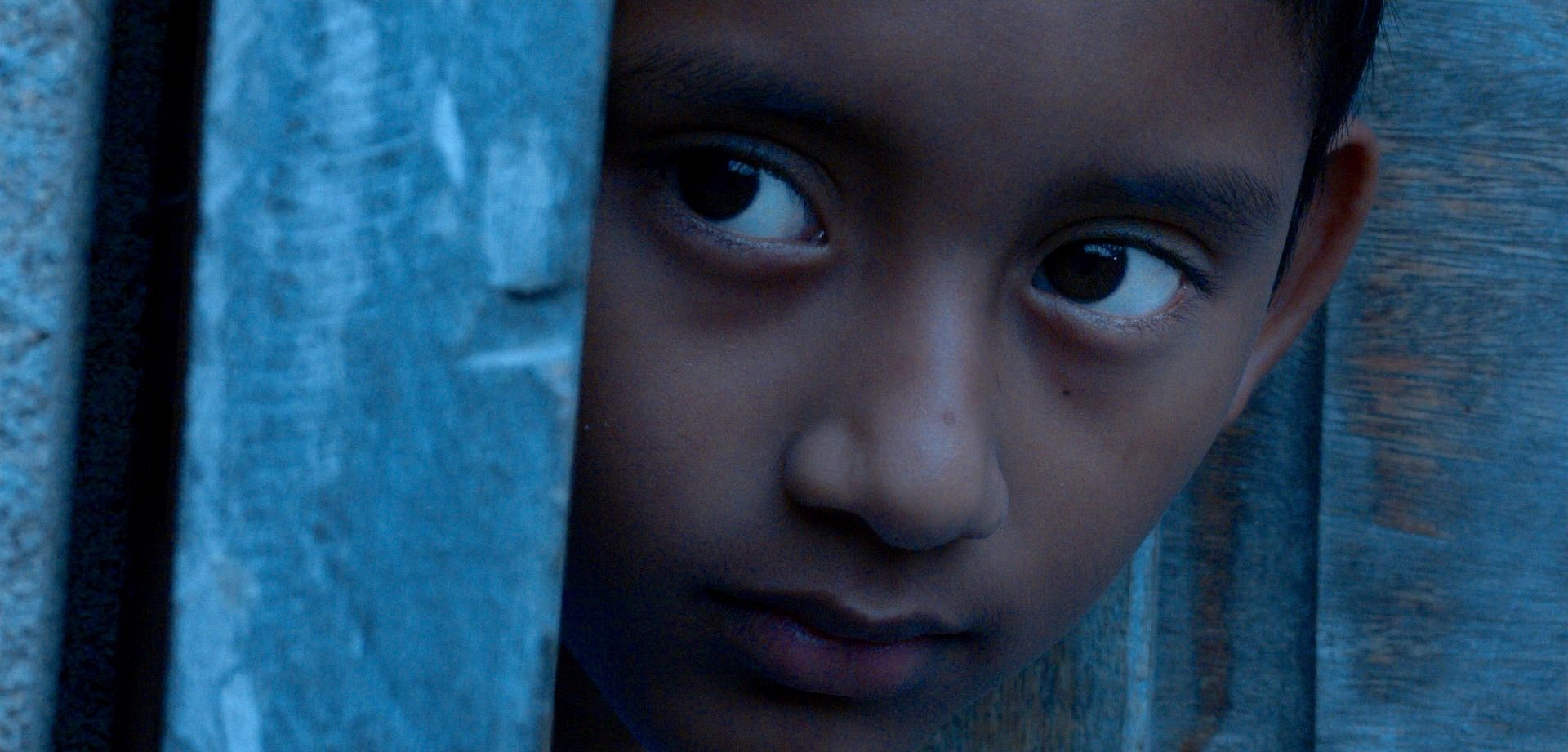Interview with Ilana Lapid
Director of Yochi
Want to learn more about the making of Yochi? Director Ilana Lapid was generous enough to provide some insights into how the project came together and how her experience at DCEFF opened her eyes to the world of environmental filmmaking.
Most short films about environmental issues are documentaries. Why did you decide to make a narrative short instead? How did the narrative framework help you to tell the story you wanted to tell?
IL: My background is in narrative filmmaking, and I’ve been especially interested in telling stories of healing, personal transformation, and social and environmental impact. In 2016, a few friends invited me to direct a feature documentary about endangered Yellow Headed Parrots. I went home to think about it and unexpectedly an image came into my mind: of a young boy, peering into a nest of Yellow Headed Parrots in Belize. I had spent several summers in Belize, co-leading a documentary field school with National Geographic wildlife documentary filmmakers Carol and Richard Foster. I went back to my friends and told them that I was interested in directing a fictional short about this young boy protecting a nest of endangered parrots, and his older brother, who’s in debt and becomes a poacher. The film would be about the conflict between the brothers. About their transformational journey, and ultimately – about the question of what we are willing to do to protect that which is most sacred to us. Luckily, Kristi Drexler agreed to produce the film. This was the end of March. By mid-May, we were in the jungle in Belize, shooting Yochi. It was pretty wild. Things came together in a great way.
We were interested in creating a narrative film that would raise awareness about the illegal wildlife trade by telling a human-interest story that audiences could relate to. We wanted the film to generate empathy and connection. Connection to the boy, connection to the birds, connection to the bond between the brothers. We were very intentional about not villainizing the poachers, because we knew that we wanted to use the film for environmental education and were planning to screen it in areas where there is active poaching activity. We were hoping that diverse audiences would be able to connect to and bond with these endangered Yellow-Headed Parrots in a visceral way, seen through the eyes of a little boy who cares about them deeply.
One of the most exciting parts of the journey of Yochi is that we partnered with environmental non-profits to use the film to raise awareness and foster dialogue about the issue of poaching. The film was taken on educational screening tours across Belize, Guatemala, Honduras and Tunisia. Just a few weeks ago, LoraKim Joyner of One Earth Conservation sent us photos from a screening of Yochi in Guyana at a parrot conservation and tree climbing workshop in Karasabai Village. We are still very excited for organizations working on the issue of the illegal wildlife trade to screen Yochi in affected communities – both in person and online. The film, which has English subtitles, has also been subtitled into Spanish, Portuguese, and Arabic. Feel free to reach out to us with any questions: yochifilm@gmail.com.
How did you find your actors? Are they from the community represented in the film?
IL: Casting this film was definitely challenging! We shot in western Belize, near the border with Guatemala. We knew of no trained actors in the region, so we were looking at casting non-actors. One of our producers, Daniel Velazquez, went around villages putting the word out and this is how we found our 9-year-old star, Kerry Landero, who played Yochi. I fell in love with Kerry the moment I saw his face in a photo Danny sent me. But at the time that I flew to Belize, two weeks before the shoot, we still hadn’t found the person to play his older brother, Itza. We announced the part on the radio, held casting sessions at a local restaurant, and even chased down a man on a horse (who knew my producer Arran), looking for Itza. Three days before the rest of the US-based crew arrived, I got lucky. At a birthday party in a jungle lodge, I saw 18-year old Evan Martinez eating his dinner. I instantly knew he would play Itza, and luckily, we were able to convince him. We held a few days of rehearsals by the river, and then we started shooting.
The crew was composed of both American and Belizean filmmakers. Since I’m an outsider to the region and cultures of Belize, I worked with community members in San Antonio Village to make sure we got all the details right. Evan told me that certain scenes should be spoken in Belizean Creole, and so we made that change. The film is in English, Mayan, Spanish and Belizean Creoloe, with English subtitles.
Do you know if the issue of parrot-poaching was affected by the pandemic? Did additional stresses put on these communities lead to increased poaching?
IL: I haven’t been back to Belize and Guatemala since the pandemic, but our experience is that poaching is a big issue in rural areas with limited economic opportunities, and the pandemic added additional economic stressors. While making Yochi, we worked closely with Nikki Buxton, the founder and director of Belize Bird Rescue. Currently, Belize Bird Rescue is caring for over 180 parrots and other wild birds, often rescued from nests at high risk of being poached. I highly recommend that anyone who loves parrots and cares about these issues consider supporting her organization and the important work they are doing.
About filming the parrots: The Yellow-Headed Parrots appearing in our film were chicks that Nikki rescued and was raising. We filmed the chicks on-site under her supervision, and intercut those shots with those of a nest we built and mounted in a tree. The birds you see flying in the last scene are those same chicks, several months later, on the day they were released back into the wild.
What are you working on now? Do you have any new films in the works?
IL: Shortly after I finished Yochi, I was diagnosed with and thankfully survived APL leukemia. It was a pretty big life event. In the chemo room, I met Claude, a man with stage-four lung cancer. A year later, he came to my office and asked me to direct a love poem that he wrote as a surprise for his wife, since he knew he was dying. The poem takes place in the Jardin de Luxembourg, Paris. Given that Claude could no longer travel, we built the park on a stage in Las Cruces, NM and he acted in it. I decided to make a documentary about the process of making this poem-film. It’s a documentary about choosing creativity and love in the face of uncertainty and death. I’m currently in post-production on this film, which is a very personal one for me.
As far as environmental filmmaking, Yochi had a big impact on my life. As did DCEFF, my favorite festival of all the festivals I attended. I was so moved and inspired by the films that I saw at DCEFF, and the festival opened my eyes to the power that film can have for environmental impact. I’m an associate professor at the Creative Media Institute at New Mexico State University, and I came away from DCEFF with a desire to take some action as an educator to participate in training a new generation of environmental content creators. I developed and taught an environmental filmmaking course, and this led Dr. Kristi Drexler and I to apply for congressionally directed spending funding to create a new initiative: the Southern New Mexico Environmental Media Center at NMSU. The SoNM EMC would be a space for interdisciplinary collaborations between scientists and researchers working on climate and other pressing environmental issues with visual storytellers, who can amplify the impact of their work across media platforms. Senator Ben Ray Luján submitted the proposal and it’s currently in committee, so we’ll see what happens! In any case, we completed an exciting pilot project this summer – the Gila Film School. With funding from a grant from the US Forest Service, we took 13 students to the Gila for 11 days, to make short documentaries about people living and working in the Gila Wilderness of southwest NM. These films will become a showcase used by the US Forest Service as part of the 100-year celebration of the Gila Wilderness, as the nation’s first designated wilderness area.
As filmmakers, we often hope to take our audiences on journeys… The truth is also that the process of making a film takes you on a journey, and often on a profound journey to unexpected places! This has definitely been my experience making Yochi and screening at DCEFF, which opened my eyes to a world of environmental filmmaking. It changed my life as a filmmaker and educator. While instructing the Gila Film School, the majority of short films I assigned my students were DCEFF films, from the Watch Now playlists. Additionally, I was so impressed by the film Into the Dark – that I saw virtually at DCEFF in 2020 during the pandemic – that I reached out to the director, Michael O. Snyder. I was later able to invite him to give a screening at NMSU through our climate change speaker series, and he has become a friend and advisor. So thank you to DCEFF for the life-changing, globe-changing work that you do!


